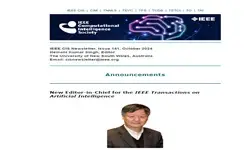Irina Perfilieva: Fuzzy (F-) Transforms - The Efficient Tool for (even big) Data Preprocessing
Irina Perfilieva
-
Members: FreeCIS
IEEE Members: Free
Non-members: FreeLength: 01:01:24
08 Jul 2018
Irina Perfilieva Keynote Talk (FUZZ-IEEE) at WCCI 2018
Abstract: The F-transform provides a (dimensionally) reduced representation of original data. It is based on a granulation of a domain (fuzzy partition) and gives a tractable image of an original data.
Main characteristics with respect to input data: size reduction , noise removal, invariance to geometrical transformations, knowledge transfer from conventional mathematics, fast computation.
The F-transform has been applied to: image processing, computer vision, pattern recognition, time series analysis and forecasting, numerical methods for differential equations, deep learning neural networks.
In this talk, I will present theoretical background and applications of the proposed technique. I will discuss the current research being carried out within the Computer Vision group in the Institute for Research and Allications of Fuzzy Modeling, university of Ostrava.
Abstract: The F-transform provides a (dimensionally) reduced representation of original data. It is based on a granulation of a domain (fuzzy partition) and gives a tractable image of an original data.
Main characteristics with respect to input data: size reduction , noise removal, invariance to geometrical transformations, knowledge transfer from conventional mathematics, fast computation.
The F-transform has been applied to: image processing, computer vision, pattern recognition, time series analysis and forecasting, numerical methods for differential equations, deep learning neural networks.
In this talk, I will present theoretical background and applications of the proposed technique. I will discuss the current research being carried out within the Computer Vision group in the Institute for Research and Allications of Fuzzy Modeling, university of Ostrava.


